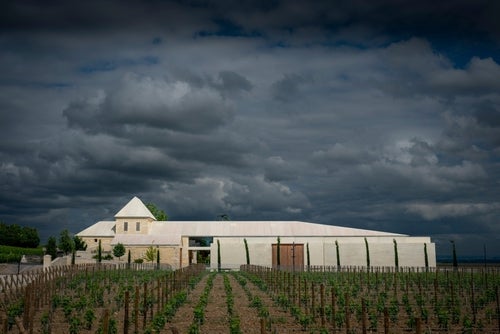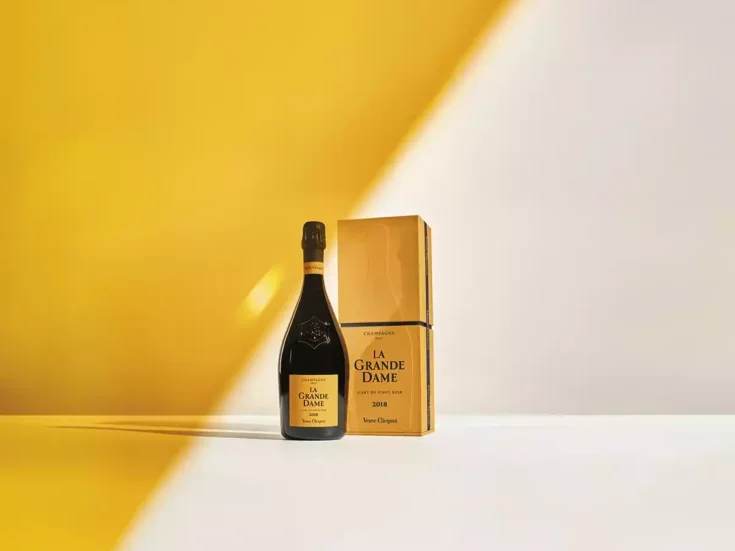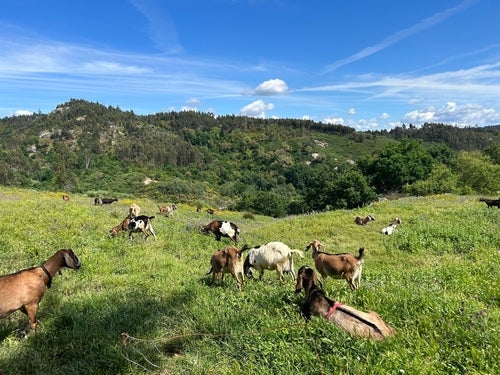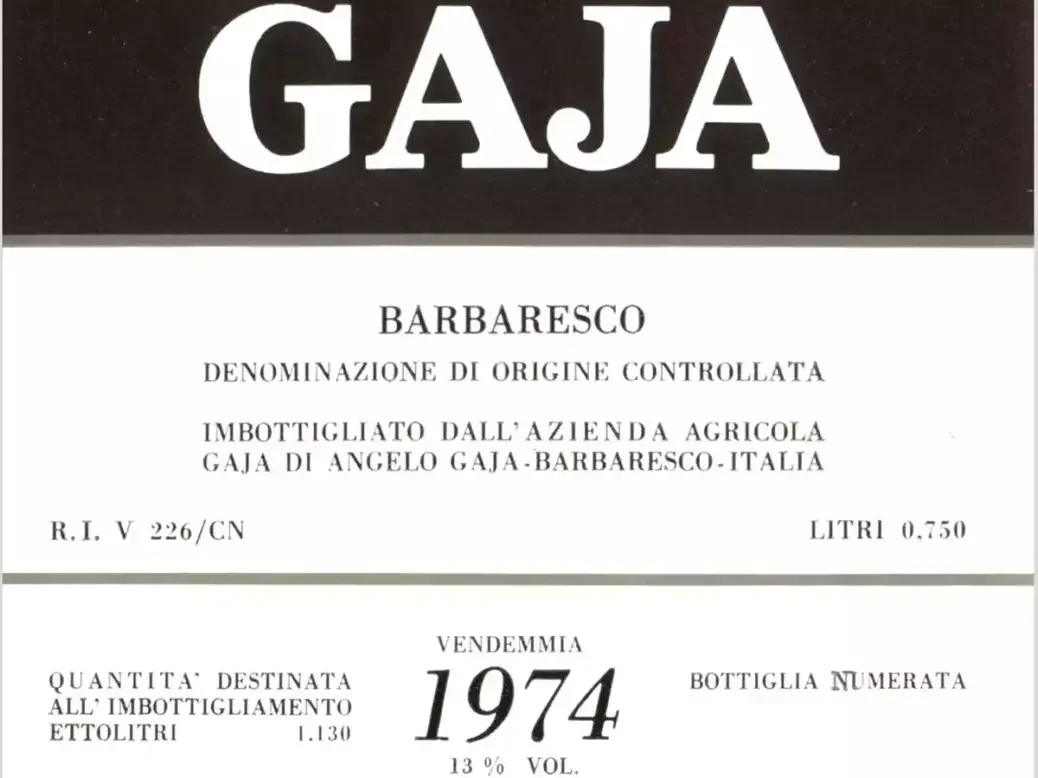
Susan Hulme MW takes advantage of a rare opportunity to join Angelo, Gaia, and Giovanni Gaja to taste some of the family’s most significant wines.
“Angelo is always ahead of time. He doesn’t say, ‘I am 83’; he says, ‘I am close to 84.’ [He is] always looking forward.” Gaia Gaja made these opening comments after her father Angelo had introduced himself at the “Tasting of a Lifetime” event in London’s Dorchester Hotel on October 10, 2023. The Gaja family—Angelo with daughter Gaia and son Giovanni—were here together for a very rare presentation and to talk about and taste some of the family’s most memorable vintages.
Angelo was certainly ahead of his time when he first planted international grape varieties in Treiso in Barbaresco. At that time, nobody made or even thought about making high-quality wines from anything other than Nebbiolo in this prime Nebbiolo territory, and the idea of planting white varieties would have been considered “an absurd decision,” as Gaia went on to comment. But Angelo boldly planted Cabernet Sauvignon in 1978, causing his father, Giovanni, to utter in despair that it was darmagi—“a shame,” in Piemontese dialect—to uproot traditional native varieties in order to plant Cabernet Sauvignon. Darmagi duly became the name of this very successful wine, first released in 1982. In 1979, he had planted Chardonnay, and in 1983 the first Gaia & Rey 100 percent Chardonnay was made. He had the foresight to realize that beautifully made wines from recognizable grape varieties were a way to capture the attention of consumers and connoisseurs—and ultimately to bring them back to the wines of Barbaresco and to his father’s beloved native Nebbiolo.
The family business started in Barbaresco in 1859, with just 2ha (5 acres) of vineyards. It was under Angelo’s energetic and dynamic leadership in the 1970s that their wines rose to international fame. The Gaja family now own 130ha (320 acres) in Piemonte, in Barbaresco (Barbaresco and Treiso), in Barolo (Serralunga d’Alba and La Morra), and Alta Langa. Farther south in Tuscany, their Pieve Santa Restituta estate in Montalcino covers 27ha (66 acres) of vineyard, and by the coast, their Ca’ Marcanda estate in Bolgheri has plantings of Cabernet Sauvignon, Cabernet Franc, Merlot, Syrah, and Sangiovese that extend to 126ha (312 acres).
One should bear in mind that, after World War II, Barbaresco, like the rest of Piemonte, was extremely poor. It was a place where grape growers had to wait in line in the main square of Alba, watching their grapes spoil in the heat, as the merchants and négociants waited for the grapes to deteriorate to drive the prices down. In 60 or 70 years—one man’s lifetime—Angelo Gaja has made his name world-renowned, and his wines now command prices of which most producers can only dream. Some of the key steps he took were adventurous and controversial at the time. Aside from planting international grape varieties, he was among the first to bottle and label single-vineyard Barbaresco. He also introduced some important improvements to wine quality by reducing yields, increasing vine density, and experimenting with Burgundian types of oak. His father had come up with the idea of putting the name Gaja on the wines in big red letters. Angelo took this lesson to heart and has continued to develop the Gaja name and brand ever since. When I asked him if he would ever consider obtaining organic or biodynamic certification, he said that they might use several of these techniques in the vineyard, but he stressed, “We are not biodynamic, we are Gaja!” It is the Gaja family name that is more important than belonging to someone else’s club. Gaja is the name that comes to mind first with these wines, then Barbaresco. Even so, Angelo and his family have done so much to raise the reputation and profile not just of Barbaresco but of Piemonte wines in general, bringing them to the attention of the wine world.
Still following the dreams
Today, Angelo could easily rest on his laurels, having comfortably installed the next generation into the family business, with his two daughters, Gaia and Rossana, and son Giovanni all deeply involved. One might imagine that he would think about relaxing a little and slowing down—but instead he seems to be speeding up. The goals over the past few years have been to find cooler and higher vineyards that, by their nature, better handle the effects of climate change, and to give Italy’s white wines a helping hand to achieve world-class status. As Angelo commented about his joint venture in Sicily on the slopes of Mount Etna, “I believe that old age starts when the regrets are more than the dreams.”
In 2016, with the Idda project, Gaja entered into a partnership with leading Etna producer Graci. “Etna was something that I have been feeling under the skin for some time,” said Angelo at the time. Idda means “she” and is an affectionate name in Sicilian dialect, used by locals to refer to Mount Etna. Today, the winery has 20ha [50 acres] of vineyards between 1,970ft and 2,625ft (600–800m) above sea level, in the villages of Belpasso and Biancavilla. There is a great focus on Etna’s brilliant white grape variety Carricante, though they also cultivate the native red Nerello Mascalese. Angelo remarked, “Etna, like Langa, is a place where elegant, enigmatic, and intriguing wines can be made. I also took into consideration the challenges of climate change—indeed, I find important the fact that Etna has the highest vineyards in Europe, and the harvest period is among the latest on the continent.”
Previously, in 2015, the Gaja family had bought 30ha (75 acres) of abandoned hazelnut groves and woods at an altitude of between 2,100ft and 2,300ft (650–700m) in Alta Langa, and they planted 14ha (35 acres) of white grapes. “We gave priority to Chardonnay and Sauvignon Blanc, since these are early-ripening varieties,” explains Gaia. “We are also open to experimenting with other varieties, such as Timorasso, Pinot Bianco, Erbaluce, Nebbiolo, and Pinot Noir, so we planted a little of all these other varieties, [and we are] waiting to see the results over the next years.” Meanwhile, they have built a new winery in Alta Langa, ready in August for the 2023 harvest “to welcome the grapes coming from the new vineyards.”
In 2019, Gaja included ten percent of Alta Langa fruit in some of their white wines with very good results, and in 2020 and 2021 this increased to 20 percent. At present, they are not sure whether they will continue to use these grapes for their existing white wines—Gaia & Rey, Rossj-Bass, and Alteni di Brassica—or for a new wine, but Gaia says, “Nature will tell us.” Some of the uncertainties of the future have already been planned for. The Idda project, as well as the new vineyard acquisitions in Trezzo Tinella in Alta Langa, both focus on white grape varieties and high-altitude vineyards. And now the baton has been passed firmly onto the next generation. Angelo’s curiosity and courage have taken the family so far, and now it is time for Gaia, Rossana, and Giovanni to spread their wings.
Back at the “Tasting of a Lifetime” last October, the family presented 14 vintages, starting with the current release of their three single-cru Barbaresco—the 2020 Costa Russi Barbaresco, 2020 Sorì Tildìn Barbaresco, and 2020 Sori San Lorenzo Barbaresco—culminating with Gaja’s Barbaresco 1974, 1964, and the magnificent 1958. In addition, there was a rare opportunity to taste two older vintages of their white wines—the 1992 Alteni di Brassica, their Sauvignon Blanc, and the 1989 Gaia & Rey Chardonnay—and the 2000 Darmagi Cabernet Sauvignon. There were many lovely wines, but the ones that really stole the show for me were the stunning 1958 Barbaresco, made by Angelo’s father Giovanni, and the three 2020 Barbaresco crus, overseen by the younger generation, Gaia and Giovanni. The 1958 had great transparency and purity, and there was a special energy and tenacity about this wine, while the latest release 2020 Barbaresco crus shared this transparency, purity, and focus but encased in the bright fruit of youth. There is a family resemblance between these wines, an ease and flow and harmony, as well as a scintillating acidity, that runs through them and connects them like an electric current. It crosses the family generations and all the changes that have taken place over the past 65 years. For me, the three Barbaresco crus from 2020 resemble the Barbaresco 1958 made by Giovanni Gaja, but with all the advantages and subtle changes that have taken place over the past 65 years. Despite the refinements of time, the Gaja identity remains strong.
A short anecdote encapsulates the ethos of the Gaja family. I remember meeting Angelo for the first time a few years ago; and after tasting together, he offered to take me on a tour of some of their vineyards. Angelo drove his big, comfortable Audi along the unpaved-earth vineyard terraces. The car grumbled and strained, but eventually we rattled through the vineyards at quite a pace, only to find at the end of our tour that we had punctured a tire. So, we stopped in Serralunga for a bottle of Champagne and antipasti, while his nephew Stefano sorted out the troubled car. It recalled an image of a man driven, focused, and determined to get to where he wants to go. In his time, at the head of the family business, he has epitomized this determination and drive.
More recently, on a cold and misty December morning in 2023, Gaia Gaja was showing me their new Alta Langa vineyards and wanted me to appreciate the environment, with the steep slopes facing in different directions and the quiet surroundings of the dense woodland, the silence punctuated only occasionally by the sound of some wild animal. As we drove precariously down a steep vineyard terrace into the vineyard, I could not help thinking, “Like father, like daughter.” Curiosity, energy, drive, and a bold desire to go further and push the boundaries are something of a family trait. And it put me in mind of Goethe: “Whatever you can do, or dream you can do, begin it. Boldness has genius, power, and magic in it.” A combination of boldness, genius, and tenacity has brought the family and the wines to where they are today—into the realm of wine royalty. Long may they reign.
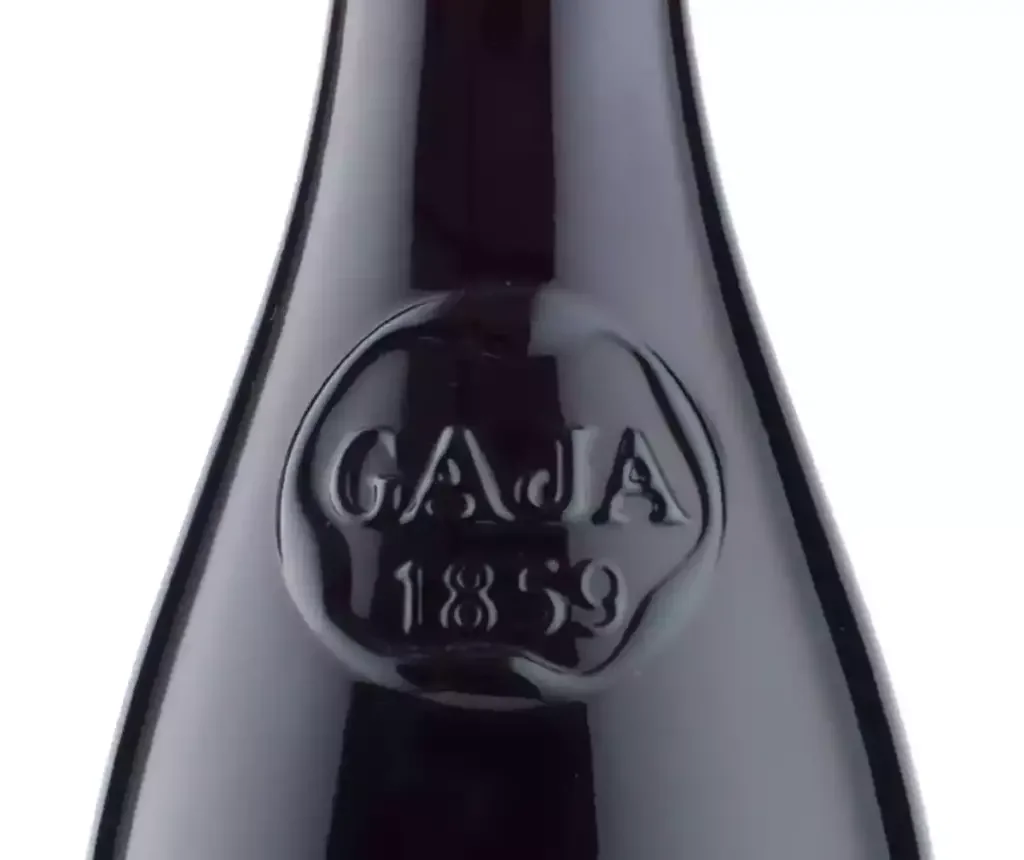
Tasting
1989 Gaia and Rey Chardonnay (13.5% ABV)
The grapes for this wine come from one of Gaja’s oldest vineyards—the Giacosa vineyard in Treiso in Barbaresco, planted in 1979. The wine was 100% oak-fermented and matured, and only 80% went through malolactic fermentation. The color is an alluringly bright green-gold, Sauternes-like. The nose is gentle, honeyed, with warm spice, butterscotch, and nut aromas. There is a slight dustiness, soon to be shaken off like a Sleeping Beauty awakening from the spell, then a lovely freshness and vibrancy, with creamy butterscotch flavors taking over. It is a beautifully harmonious wine, with a texture like melting butter and a salty, mouthwatering finish. At 34 years old, it is still surprisingly alive, silky, and seductive in texture, with at the same time a range of mature Chardonnay flavors. The finish lingers, with a chalky, salty kiss. 2023–29. | 95
1992 Alteni di Brassica (13.5% ABV) Magnum
The Alteni di Brassica Sauvignon Blanc comes mainly from three vineyards in Barbaresco, but some grapes come from Rivette in Serralunga, a north-facing vineyard surrounded by woods, which contributes to the cool, green, herbal qualities of the wine. For the 2020 vintage, 10% of the fruit comes from Gaja’s new Alta Langa estate, increasing to 20% in the 2021 and 2022 vintages. Again, I am surprised that the wine has managed to age so well, especially since this is Sauvignon Blanc and the vintage was a difficult one: 1992 had relentless rains in October, to the extent that Gaja did not bottle any Barbaresco that year. But this 1992 is a bright, golden lemon in color, with light green leaf, green herb, and sage notes, accompanied by maturing aromas of honey and waxy lemon rind. There is a silky, melting texture on the palate, with contrasting fresh acidity and crunchy green apple and sage flavors. The wine beautifully reflects the coolness of the vintage. 2023–28. | 93
2000 Darmagi (13.5% ABV)Magnum
The Darmagi vineyard was planted in 1978 with Cabernet Sauvignon—a very bold move at the time. Planting Cabernet Sauvignon in a prime Barbaresco site shocked the locals and led Angelo’s father, Giovanni, to exclaim that it was darmagi, local dialect for “a pity”—hence the name of the wine. The color of this 2000 is surprisingly youthful and dark, almost black, holding to a very narrow garnet rim. The aromas are dark and smoky, woodland fruits such as blackberries mingling with a crunchy, green-pepper note and a touch of tar. There is still plenty of lively acidity on the palate, with a mix of woodland berry fruit and lively redcurrant and blackcurrant flavors. This is a pleasingly elegant, medium-bodied wine with a wonderful silky texture and a finesse to the tannins. Sous-bois and bramble flavors linger in this beautiful, cool expression of Cabernet Sauvignon. 2023–30. | 94
1958 Gaja Barbaresco (14% ABV)
This wine was made by Angelo Gaja’s father, Giovanni—before the DOC rules were put in place in 1966, so there is no DOC on the label. Angelo remarked that all the 1958 Nebbiolo would have had some Barbera included at that time. And if you do find a bottle of 1958 on the market, there are several different labels, because the wines were bottled to order over a period of something like 14 years, and during this time the labels changed. In those days, there was no single-cru concept, and Angelo’s father Giovanni bottled different lots of this wine, labeling his best blend of the best plots “Infernot.” The 1958 at this tasting had a yellow label and was not Infernot, but 1958 is considered a legendary vintage in Piedmont, and this wine fully lives up to that reputation. This 1958 has a wonderful purity, a transparency of expression, and a gossamer-like weight and texture, supported by a vividly bright acidity. Yes, there are some notes of evolution, but which 65-year-old wine would not show some signs of age? Here, notes of woodsmoke and tar are etched like memories of winter prunings smoldering in distant vineyards. An electric shock of acidity surges through the wine, reminding me of the vitality and energy of a Vintage Sercial Madeira. It is clearly a mature wine but still very much alive and one of the unexpected stars of the tasting. And yet it shares with the 2020 vintages an understated finesse, flowing with ease across the palate. Wines with a natural beauty shining bright like stars. 2023–35. | 96
1974 Gaja Barbaresco (13% ABV)
Climate conditions in the 1970s meant that grapes ripened successfully only two or three years out of ten. 1974 had a long, snowy winter and a late spring. This was followed by a dry and hot summer and a fine autumn, so it had all the ingredients to be good; but unlike 1971 and 1975, the 1974 was considered a good vintage rather than a great one. Gaia Gaja particularly liked this wine for its freshness, and it was indeed another beautiful wine, even if the elements were a little less harmonious and more separated than the 1958. This wine still looks youthful, with bright tones of ruby that remain in the color, but the nose shows some signs of age, with sweet, dried fruit and tertiary leather notes that exist happily side by side. The 1974 has the Gaja trademark of strikingly bright acidity and superfine tannins. The vitality and vibrancy combine with faded roses and delicate red-berry fruit to create a kind of fragile beauty. 2023–34. | 94
1964 Gaja Barbaresco (13% ABV)
The 1964 vintage was the first allowed to be included in the DOC after it was created in 1966, and there would have been a small amount of Barbera included in the wine. At this time, Angelo, who had joined the company in 1961, was still working in the vineyards, learning the ropes. 1964 is described by the family as an “excellent vintage both for quality and quantity.” My bottle showed as more mature than the older 1958. Deep, dark garnet in color. The nose is a little evolved, with notes of brown sugar, leather, and game, which do not overwhelm. On the palate, it is a little leaner and more angular than the other two wines in the older wine group, again with a thread of lively acidity. Tertiary flavors of truffle and leather are more prominent on the palate, and there is a little dry edge to the tannins, but it has the beauty of faded flowers and dried roses. 2023–29. | 93
1988 Sorì San Lorenzo Barbaresco (13.5% ABV) 3-liter bottle
The 1988 vintage had a mixed spring, with some rain, a warm summer, and a cooler autumn. On its release, it was a little overshadowed by the 1989 and 1990 vintages either side of it, which were considered better. In 1968, Angelo had begun experimenting with new French oak barrique—only on his Barbera, but by the late 1980s, he was using it also for Nebbiolo, and the proportion had increased to 50% new oak barrique for this wine. Aromas of black cherry, crisp celery, and green herb reflect the coolness of the vintage, and the oak is surprisingly present even at this age, with some top notes of cream and spice. The color of the wine is a youthful inky black, while on the palate, there is tar, faded rose, and some green herb mixed with dark berries. Again, there is an impressive vibrancy of acidity, giving an exhilarating freshness. The aromas and flavors feel cool, but the silky texture is beautiful and one of the most charming things about this wine. 2023–28. | 93
1997 Gaja Sperss (14% ABV) Magnum
This wine was labeled as Langhe Nebbiolo at the time to allow Angelo the freedom and flexibility to make wine as his grandfather once did. It is a blend of 92% Nebbiolo and 8% Barbera. Intense dark fruits like blackberry and bramble mix with a little green menthol freshness, giving way to tertiary aromas of Bloody Mary and rare meat, with blood-like iron notes. There is a wonderful range of aromas and flavors, giving both nuance and intensity, interweaving with the intriguing tertiary aromas of a mature wine. On the palate, there is a super-silky texture, with vibrant, lively acidity and a touch of green herb and mint to the black fruits. The finish is savory, juicy, and long. It feels like it belongs to a different age, but it is a beautiful expression of the past. A fully mature wine, drinking beautifully now. 2023–32. | 96
2001 Gaja Barbaresco (14% ABV) 3-liter bottle
Many of the other older bottles were poured from 75cl bottles or magnums, but this 2001 Barbaresco came from a 3-liter bottle. Gaja’s Barbaresco is made from a blend of grapes from 14 different vineyards. 2001 was an iconic vintage for Piemonte and for the Gaja family. A waft of smoke, a touch of tar, and some mineral iron-like notes provide the first impression, followed by the slightly bloody note of rare meat combining on the nose and palate with smoldering earth and dark licorice flavors, wrapped in bright, juicy acidity and lively, gravelly-textured tannins. There is a great vitality to this wine, which is vibrant, with a striking energy all its own. 2023–30. | 94
Gaja Conteisa Barolo 2015 Magnum
The fruit for Conteisa comes from the famous Cerequio vineyard, one fifth of which is in Barolo and four fifths in La Morra. The Gaja parcels are on the La Morra side. La Morra is usually known for its rounder, fuller, more sensual style of Barolo. 2015 was a very good year, with a mild spring and a steady summer heat, without too many extremes. The nose is slow to open but reveals complex layers of fresh leather, exotic spice, dried flowers, and hay, laced with wild cherry and mint. The 2015 is broad-textured and delightfully appealing on the palate, deeply fragrant, with charming red-cherry fruit. A firm grip of chalky-textured tannins and striking acidity balances the sensuality and gives the wine a finish of invigorating freshness. This is a wine with a fascinating and decisive personality born of contrasts. 2023–40. | 97
Gaja Sperss Barolo 2018 (14% ABV) Magnum
Sperss is a 7ha (17-acre) vineyard, right in the heart of Serralunga, that Angelo bought out of a deep affection and respect for his father, Giovanni. Giovanni had loved these vineyards as a young man; it was in this vineyard that he enjoyed brief moments of joy and freedom from his strict upbringing while helping friends with their vintage. Hence the name Sperss, which is Piemontese dialect for “nostalgia.” 2018 was a complex year, and the heavy rains throughout the spring meant a lot more attention was needed in the vineyard, but toward vintage time it was quite warm, without the big diurnal swings really needed by Nebbiolo to show its best. This 2018 reflects the lightness of the vintage and is a little more minerally and less forthcoming initially, with notes of rose and smoke and just a touch of the waxy, polish notes of secondary aromas. This is a more linear wine than the rounder Conteisa, with firm, gravelly textured and assertive tannins on the finish that are more typical of Serralunga. 2023–38. | 95
Sorì San Lorenzo 2020 Magnum
Sorì San Lorenzo is a single-vineyard wine, first made in 1967. Angelo Gaja remarked, “We were among the first to make wines from this steep vineyard closest to the river, which has more humidity—but Nebbiolo loves humidity.” Summer humidity in the recent, increasingly hot, dry vintages, can be a boon. There is also more limestone in the soil here, so excess water is absorbed by the sponge-like effect of the soil. The name Sorì is local dialect for “sunny,” and it is used for the best vineyard sites with exposure to the sun. The 2020 San Lorenzo has a very young-looking, almost black, ruby color. Gaia describes the aromas as often “wood and roots.” There is a slightly creamier uptake of oak right now, which matches the black-cherry, black-raspberry flavors and richer mid-palate. The texture has a beautiful, sumptuous quality, without being heavy, and the wine has a wonderful flow across the palate. Supreme harmony in a glass. 2025–50. | 97
Sorì Tildìn Barbaresco 2020 (14% ABV) Magnum
Sorì Tildìn is an amphitheater-shaped vineyard at the top of the hill above the Costa Russi vineyard. It was bought in 1974, with the first vintage of this wine being 1978. The soil is sandier and warmer here, and vines are planted vertically and at a higher density. This wine has a very subtle, spicy nose and the aromas take time to express themselves fully, but eventually blood-orange and orange zest notes venture forth. It has a wonderful, mouth-filling concentration with very bright red-berry fruits and a vivid acidity that dances on the palate. Every now and then, the flavors are punctuated by a spiky green-herb note that, together with the juicy freshness, keeps everything bright, lively, and vivacious, and in beautiful harmony. A gamut of aromas and flavors combine with a filigree texture and a beautiful ease and flow across the palate, but as well as this, Sorì Tildìn also has a certain tension and a nervous personality that I find so appealing. 2025–45. | 97
Costa Russi 2020 (14% ABV) Magnum
The Costa Russi vineyard, which Gaia describes as shaped like a rounded belly, sits below Sorì Tildìn and faces a wide-open valley. It is west- and south-facing, catching more of the last rays of the sun, but it has a cooler, compact clay soil, and Gaia comments that she always gets more coolness and freshness on their Costa Russi Barbaresco. Blood/ruby in color, with a youthful pink rim, this wine has a very gentle, subtle nose that doesn’t reveal much yet, except light oak-spice and a little black cherry. On the palate, there is a very fine gossamer-like texture and beautifully integrated tannins, again with the signature of bright, bold, and dazzling acidity. The seamless flow, the fine, silty tannins on the finish, and the lick of savory saltiness combine to produce another wine of great harmony. 2024–43. | 96

